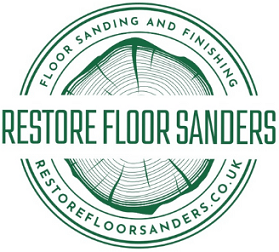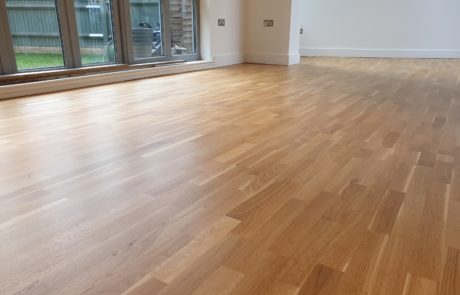Floor Sanding and Floor Restoration
South East London & Kent
Restore Floor Sanders provide Outstanding Floor Sanding & Floor Restoration Services all over South East London & Kent. When it comes to falling in love with your wooden floors all over again, our fully insured team, with over 15 years experience in Floor Sanding Restoration are the professionals who can help. We offer a one-to-one service from start to finish, ensuring your project is carried out by the same person you meet during your initial consultation. Fully Covered by AXA Public Liability Insurance
Commercial & Domestic Flooring Services
While most of our Flooring Services are carried out in South London & Kent, we’re happy to help home owners and commercial clients with larger Floor Restoration projects in the surrounding home counties.
Hardwood Floor Restoration
Commercial Floor Sanding
Get In Touch
Our experienced team are happy to provide free online, no obligation, estimates. Whether it be a smaller or larger restoration project please don’t hesitate to get in touch with Restore Floor Sanders.
We have undertaken work maintaining and restoring a wide range of numerous different floor types, and our customer service always comes highly recommended.
Our floor sanding and restoration services have evolved over the years to become finely tuned and effective. And nothing gives us greater satisfaction than customers seeing their parquet wooden floor (as an example) in a whole new light, giving a real sense of warmth to their precious home.
Frequently asked Questions about
Floor Sanding and Restoration etc
Below are some answers to questions we frequently get asked about the services we provide. If, for whatever reason, your query isn’t addressed below, please don’t hesitate to contact Restore Floor Sanders.
Lacquer vs Hardwax Oil: Pro’s & Cons
Lacquer
Pro’s: Very hard wearing and if maintained properly will last a few years longer than Oil.
Cons: Very difficult to spot repair if stained or scratched.
Hardwax Oil
Pro’s: Brings out the beauty of wood, easy to maintain and is patch repairable.
Cons: Standard Hardwax Oil requires regular maintenance to keep it looking tip top.
As you can see both products have their advantages and are good options however, each product will suit clients differently depending on the premises.
We will asses this for you during our consultation and give our advice on which will be the most suitable.
Yes the size of the gaps and floor type will determine which method is used. Our team are experienced in using a number of highly effective gap filling techniques such as; Resin, Slivers or Gap Master.
Additionally if you have floorboards, we do not recommend Resin Gap Filling. Floorboards are sub-floors and move a lot over time, especially with changes in temperature.
Yes furniture must be removed prior to any works taking place.
Our prices are based on areas to be worked on being clear of furniture and other obstacles before the restoration process begins.
This depends entirely on the floor type and condition however, to give you a better idea, to sand and seal a 25-30m2 room would usually take a day to complete, providing the area is free of furniture in preparation for us to come in and carry out the work.
Because all wood floor restoration jobs are different, this time frame is given as an estimate only. To get a more specific estimated time frame, based on the specifics of your requirements, please contact us to discuss your project.
Short Answer: Before.
Although floors can be covered pretty simply during painting, the use of ladders and paint itself, could all potentially cause damage to a wooden floor. With this in mind, our recommendation is to paint your walls before spending money on wooden floor sanding and finishing.
Any minor damage or spills affecting your floors can be rectified by the team at Restore Floor Sanders during the floor sanding process however, trying to do so after can be a very tricky process.
Short Answer, Before.
Skirting boards can get marks from the edge sander and also during the staining process. With this in mind our advice follows:
We recommend painting your skirtings to completion, with the view to re-touch any effected areas after the floors are complete. The reason for this is because it’s a lot simpler than trying to cut in over a newly finished floor.
Staining Floors:
When having your floors Stained, we still suggest painting your skirting boards after due to the pigments in the stain needing a couple layers of paint to fully cover.
We take as much care as we possibly can when staining however, we have to work extremely fast in order to prevent over lap lines. I’m sure you can appreciate the odd mark to the skirting does occasionally happen.
Why not tape them you say? We tried this many years ago, the Solvents simply eat right through masking tape and as for using duct tape, well this can cause more damage than the stain when removed, as there likely to need filling, rubbing down, priming then two top coats again.
If however, you wish to paint them after, use the lowest tack masking tape available as strong-backed tape can sometimes bond with the finish, thus causing it to peel when removed. If y9u have a small gap between the floors and skirtings, you can always use a roll of lining paper and simply slide underneath -while painting with caution and care of course.
Sanding skirting boards – do I really need to?
In short, yes.
Assuming you haven’t purchased a brand new primed skirting board, sanding skirting board is an absolute must. Sanding is essential as it removes old paint or impurities, gives your skirting a smoother surface, and the paint will stick much more easily. Sanding skirting boards can have a dramatic affect on the look and finish of your floor and entire room. With all the bending, crouching and lying on the floor it’s not most people’s idea of fun but trust us when we say it will be worth it in the long run!
Equipment
To sand your skirting board, you will need equipment:
- Skirting Boards (new or existing),
- Sandpaper or Electric Sander,
- Knee pads or cushion to lean on,
- Eye Protection, and
- Dust Mask.
Preparation
Sanding skirting boards creates a lot of dust so before you start, prepare your room. Remove tables, chairs or any other furniture. Also make sure the room you are working in is well-ventilated – open the doors and windows if you can.
How you sand your skirting board might vary depending on the size and length of skirting board you have. Most people use sandpaper as it is cheap and easy to purchase. However, sanding with sanding paper can be hard work, especially if you have a lot to do. If you don’t like the sound of that, an electric sander might be your new best friend. Although they involve spending a lot more money, they take the effort out of sanding and are remarkably effective.
How-To?
As soon as you have kitted yourself out and removed all unnecessary furniture, you can start sanding. Go with grain, rather than against it, and keep sanding until you get a smooth finish. Run your fingers along the skirting board to feel if there are any rough edges or sections that you might have missed. Once you have finished sanding, give time for the dust to settle from the air. Then, wipe down your skirting board to remove the excess dust. Vacuum the room to eliminate as much dust as possible. We would recommend using a thin nozzle to get close around the skirting board too. When you are no longer able to see any dust, clean the skirting board using sugar soap. This is a brilliant cost-effective solution to remove any tiny bits of dust or grease that your duster or vacuum might have missed. Allow the skirting to dry and you’re ready to paint!
It sure can, Hardwood flooring such as Oak, Merbau, Walnut and many more look amazing when complete.
Be sure to check out the photographs of our recent work; we’ve tried to include pictures showing a wide variety of wood types in our portfolio.
If you have questions about your wood flooring, please contact us.
The cost of any project varies depending on the Condition, Size, Wood type and the Finish required.
Reductions on larger Commercial areas are always available when you choose Restore Floor Sanders.
Contact us today for a free estimate!
LATEST
PROJECTS
Restore Floor Sanders have completed many Floor Sanding & Restoration projects across South East London & Kent. Check out our latest work below;



